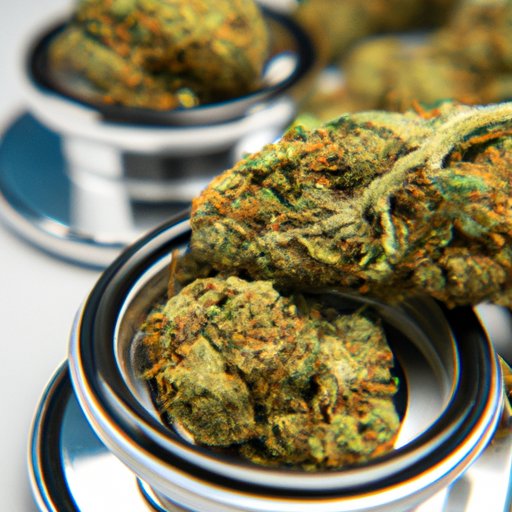
Introduction
Medical marijuana has been at the center of many debates in recent years. As more states in the US legalize its use for medical purposes, the debate over its effectiveness and safety continues among healthcare professionals and the general public. This article aims to provide an insight into what doctors are learning about medical marijuana, its latest medical research findings, physician’s perspective, and how it is used within the medical community.
Latest Medical Research Findings on Marijuana
The last decade has seen increased medical research on the therapeutic and harmful effects of marijuana on human health. One of the most significant findings of medical marijuana is its ability to alleviate pain in patients with chronic pain conditions. A 2018 National Academies of Sciences, Engineering, and Medicine report concluded that cannabis and its derivatives are effective in treating chronic pain and reducing chemotherapy-induced nausea and vomiting in cancer patients.
However, the same report also highlighted potential mental health risks linked with marijuana use, including an increased risk of anxiety, depression, and schizophrenia. The study also found a connection between regular and heavy use of marijuana and respiratory problems, as well as an increased risk of motor vehicle accidents.
Physician’s Perspective on Medical Marijuana
Medical marijuana has been proven as an alternative treatment option for many medical conditions. However, physicians continue to debate its effectiveness and potential risks. One common concern is whether it is safe for specific populations, such as pregnant women and children. Several published studies have found that cannabis use during pregnancy could negatively affect fetal growth and neurodevelopment and increase the risk of cognitive impairment and behavioral problems in the offspring.
Physicians remain cautious about recommending medical marijuana, given the limited research on long-term effects and potential risks. A survey of 1,528 doctors conducted in 2016 found that only 6% of respondents felt they had sufficient knowledge and training to provide recommendations to patients on the use of medical marijuana.
Medical Professionals and Patients Using Medical Marijuana
Medical marijuana has shown promising results in treating various health conditions, including cancer, glaucoma, chronic pain, anxiety, and seizures. In the US, legal access to medical cannabis has significantly increased in the last decade, resulting in an increase in its use for therapeutic purposes.
Medical professionals use medical marijuana to alleviate pain in cancer patients and help manage symptoms in patients with chronic disease. In a survey conducted by Health Affairs, 62% of medical marijuana patients reported using it to treat pain, 13% used it for anxiety, and 12% used it for muscle spasms.
Medical Education and Training for Doctors and Healthcare Providers
As more states legalize medical marijuana, healthcare professionals must update their knowledge of its use. To this end, several medical schools in the US have incorporated cannabis education into their curriculum. In 2017, the American Academy of Pediatrics called for the inclusion of medical marijuana in medical school curriculums in states where it has been legalized. However, the slow pace of legalization has limited the implementation of this recommendation.
The importance of medical education and training in the use of cannabis lies in the need to provide patients with the best possible care. As more states legalize medical marijuana, healthcare professionals need to be knowledgeable about its medical benefits and risks.
Legal and Regulatory Landscape Surrounding Medical Marijuana
The legal and regulatory landscape surrounding medical marijuana varies across states in the US. As of 2021, 36 states and the District of Columbia have legalized medical marijuana, while 14 states have legalized marijuana for recreational use. Despite this, the federal government still considers marijuana an illegal drug under federal law.
The conflicting laws at the state and federal level have led to challenges in accessing medical marijuana, especially for patients with chronic health conditions. Insurance providers have also been slow to cover medical marijuana, with most policies excluding it from coverage.
Conclusion
Medical marijuana has come a long way in the US. Evidence shows that it has the potential to treat various health conditions effectively. However, while it presents an alternative treatment option, physicians remain cautious about its effectiveness and safety profile. For medical marijuana to become mainstream, more efforts and research are needed to help patients and physicians make informed decisions about its uses and potential risks.





